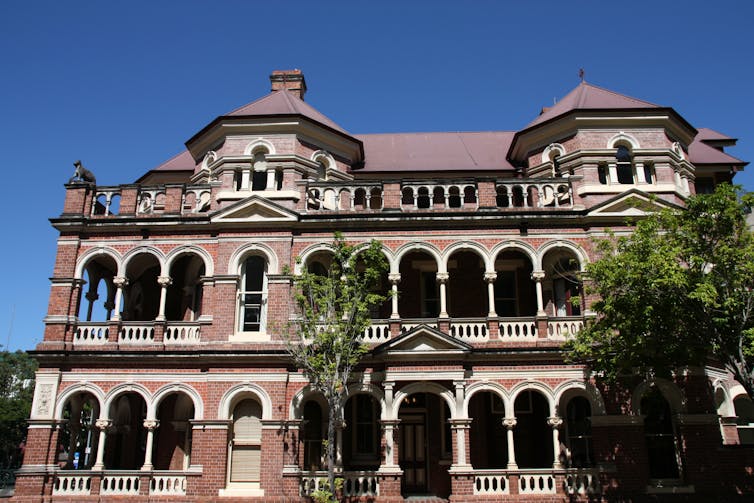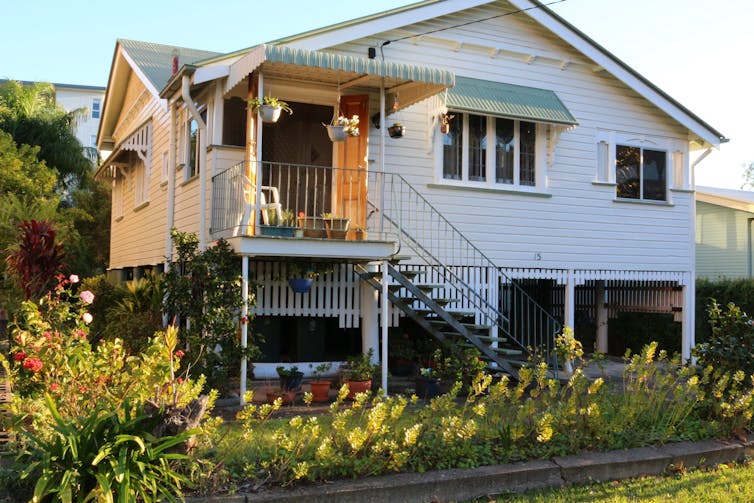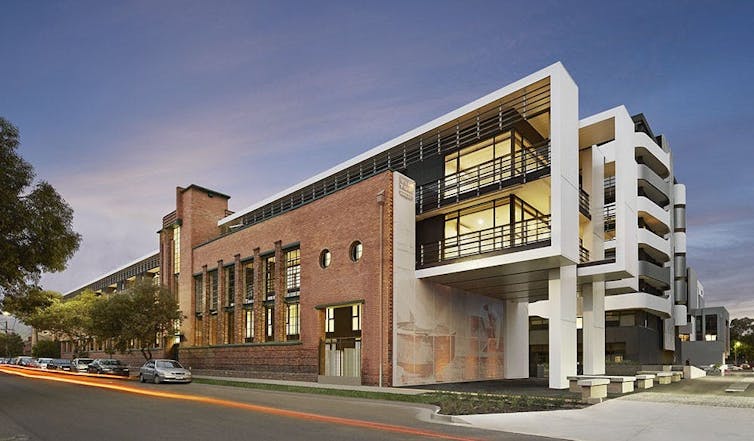Heritage building preservation vs sustainability? Conflict isn't inevitable
- Written by Sara Wilkinson, Associate Professor, School of the Built Environment, University of Technology Sydney
This article is part of our Building on Heritage series on preserving heritage buildings and places while making them as environmentally sustainable as possible.
Contemporary preservation philosophy in Western cultures has been around for 140 years, and sustainable development for 30. Are the principles compatible or in conflict?
What’s a heritage building?
Heritage building does not have an unequivocal definition. It has several components, which co-exist to varying degrees. These include:
- cultural and historic
- intrinsic and in use values
- symbolic
- the relationship between the building and location.
A building may have little heritage value as a property but have value because a momentous event transpired there. Heritage buildings fulfil important demands for cultural experiences and leisure, and create benefits for tourism. Heritage buildings also have other positive economic impacts, such as generating higher rental and occupancy levels.
Further reading: Preserving cities: how ‘trendies’ shaped Australia’s urban heritage
Let’s be clear about what we mean
Many words – preservation, renovation, restoration and conservation – are used when talking about heritage. What do they mean? And what conditions and responsibilities do they engender?
Renovation means “to make new again”. In buildings subjected to numerous interventions, the question is: to which period do we renovate? Outcomes depend on available documentation of original construction methods, materials and layouts.
Preservation aims to halt deterioration and ensure no further changes occur. It places requirements on materials and methods, as final appearance is no longer the most important factor. Rather, the aim is to retain as much of the building fabric as possible.
 The Mansions is a heritage-listed group of six three-storey buildings in Brisbane CBD, Australia.
Tupungato/Shutterstock
The Mansions is a heritage-listed group of six three-storey buildings in Brisbane CBD, Australia.
Tupungato/Shutterstock
Reversible repairs: all repairs or additions must be reversible and removable. The work should not affect the condition of the original material now and in the future.
Preserving buildings means the building dictates choices on how it is treated; this does not involve artistic choices or material experimentation. In this understanding of the term, interventions that change performance with regard to water and energy use may be limited. It also excludes changes that alter the building fabric or appearance.
It is important to understand these definitions and that the lines between definitions change with the circumstances and buildings involved.
Inherent sustainability in heritage buildings
Heritage buildings tend to be inherently environmentally sustainable, with high levels of embodied energy.
Buildings from pre-industrial periods are likely to contain more natural, low-energy, less chemical-based material. However, they predate concerns about energy and water use, so this may be high. Opportunities do exist to optimise water and energy use in heritage buildings.
Many older buildings were designed and built to work with local climate. The traditional Queenslander house is a good example, with a design that allows air flow below the building to keep it cooler. In other areas, high thermal mass kept buildings cool in summer and warm in winter.
 The traditional Queenslander home allows a cooling air flow under the house.
Ines Porada / Shutterstock
The traditional Queenslander home allows a cooling air flow under the house.
Ines Porada / Shutterstock
Further reading: Sublime design: the Queenslander
Preservation reduces landfill waste, demolition energy use and new construction. Adaptive re-use concepts, renovations for less energy use, maintenance and type of use also affect heritage building sustainability.
Applying circular economy principles to renovations can improve sustainability. Combining energy and material use, quality and adaptability, sustainability can be discussed and the integral sustainability of heritage buildings measured.
Further reading: Explainer: what is the circular economy?
Equally, we need to consider social and economic sustainability in heritage buildings.
So how has policy evolved to manage all this?
In 1877, William Morris established the Society for the Protection of Ancient Buildings (SPAB). Although responding to conservation issues of 19th-century England, the principles remain a philosophical foundation for protecting buildings of all styles and times.
The International Council on Monuments and Sites (ICOMOS), established in 1964 as a global NGO linked to UNESCO, shares the best practices globally. The United Nations defined sustainable development in 1987, articulating growing concerns with the economic, social and environmental impacts of development.
Later, countries adopted UN Sustainable Development Goals, with Goal 11 covering sustainable cities and communities. Target 11.4 aims to: “strengthen efforts to protect and safeguard the world’s cultural and natural heritage” under SDG 11, which is to “make cities inclusive, safe, resilient and sustainable”. This provides the overarching framework for heritage buildings.
ICOMOS promotes conservation, protection, use and enhancement of cultural heritage sites. ICOMOS closely engages with sustainable development, hosting scientific events and issuing policy documents to highlight the role of heritage. Resources comprise best practice guidance and advice is available internationally and nationally.
ICOMOS influences practices in Australia through statutes, ethical statements and principles and a procedural handbook. In Australia, heritage protection began in the 1930s with lists of buildings that evolved to registers documenting heritage attributes.
The various state heritage offices and councils in Australia are involved in strategic projects contributing to sustainable development. These include cultural landscapes, wind turbines and heritage. Policy frameworks and strategic plans for heritage and sustainable development enable the Australian Heritage Council, state heritage bodies and stakeholders to work towards sustainable development.
However, development applications to alter or repair local buildings are considered at local government level. In some areas expert knowledge and resources regarding heritage, conservation philosophy and sustainability may be limited. The good news is there is Australian guidance on striking a balance between heritage and sustainable development.
 Formerly Tip Top Bakeries, Tip Top Brunswick East is a multi-award-winning development in Melbourne, Australia.
Little Projects
Formerly Tip Top Bakeries, Tip Top Brunswick East is a multi-award-winning development in Melbourne, Australia.
Little Projects
It’s not easy being green
Heritage and sustainable development are intimately linked. Understanding heritage helps us better comprehend cultural and social systems. It is vital to understand the philosophical definitions of terms.
Sustainability is an important tool for heritage preservation. Another consideration is time, which includes the fact that changing, evolving uses add to heritage.
Many buildings we see as heritage have changed greatly over time. For instance, the Tower of London has in its 900-year history been a castle, home, museum, prison and tourist attraction.
If we are to maintain social and economic use, sometimes we need to accept change. In these cases, reversibility of repairs is an effective approach.
To sum up: it’s complex. Buildings are unique and need to be assessed on various levels:
- What is the heritage value?
- What work is proposed?
- What are existing levels of sustainability?
- Can measures be incorporated that are reversible and do not damage original building fabric?
Preserving heritage and sustainable development are both important goals. Conflicts need to be identified, assessed, documented and managed to achieve an optimum balance.
This article draws on the authors’ book, Building Resilience in Urban Settlements through Sustainable Change Of Use (Wiley-Blackwell, 2017, ISBN 978-1-119-23142-4).
Authors: Sara Wilkinson, Associate Professor, School of the Built Environment, University of Technology Sydney



